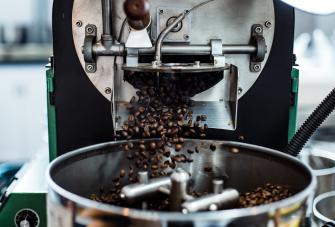6 Factors That Will Affect Your Menu Pricing Strategy
When choosing a restaurant, menu price is a top priority for many customers [1]. From a restaurant owner point of view, creating the perfect menu pricing strategy is extremely important, as it’ll dictate whether or not customers choose to dine in your venue, or elsewhere.
This guide explores 6 different factors you need to take into consideration when creating your menu pricing strategy.
What is menu pricing?
Menu pricing is exactly what it sounds like: calculating the prices of individual items on a menu. The prices of individual dishes are usually calculated through a variety of factors, such as the cost of ingredients, labour, and markup for profit.
However, this may not be the only factor in deciding the prices of individual dishes.
What is a menu pricing strategy?
Your menu pricing strategy is how much you’ll charge, taking your entire menu, and other aspects, into account. . After all, when you visit a restaurant, the atmosphere and experience are important elements too, so you might want to take these things into consideration when calculating your pricing. This could mean deviating from prices calculated based solely on your food cost percentage in favour of other prices that may inform an overall strategy. This might mean pricing certain items higher or lower depending on the amount of profits you’d like to see..
Here are some factors you might want to take into account when creating your menu pricing strategy.
Costs
Cost is the primary factor to consider when choosing how much to charge for the items on your menu. . To make a very basic costing of your menu, you’ll need to calculate your food cost percentage.
The basic formula for calculating your food cost percentage is:
Food Cost Percentage = (Beginning Inventory + Purchases - Ending Inventory) ÷ Food Sales.
Direct costs
Direct costs are the costs are the costs of the ingredients, which could include:
- The cost at which ingredients are bought
- Costs related to food waste
- Costs related to portion sizes
The higher your direct costs, the higher your likely menu prices.
Indirect costs
Indirect costs include all the costs associated with preparing the food that aren’t included in preparing the ingredients. These may include:
- Water
- Electricity
- Gas
- Labour
Having lots of indirect costs will force your prices even higher.
Overhead expenses
Overhead expenses are costs you run into in simply operating your restaurant. These could include:
- Rent
- Marketing budget
- Renovation costs
It’s very easy to let your overheads get out of hand. Make sure to manage these costs, or you might have to put your prices up.
Seasonal costs
The restaurant industry is incredibly vulnerable to seasonality. Seasonal costs could include:
- Costs of hiring extra staff for peak trading months
- Changes in the price of ingredients that are in or out of season
- Heating and cooling costs for hot and cold months
Paying attention to your seasonal costs will allow you to thread the needle by buying seasonal ingredients at lower prices.
Appealing to your customers
How you price your menu will depend on the type of customers you’re looking to attract. The prices you set will need to be affordable to the customers who walk through your door. If they’re too high for the type of people in your area, you may drive away your potential customers.
Creating a great menu with good, reasonable prices will mean doing some market research. Take a look at the neighbourhood you set up in. What types of people tend to frequent your area? What types of jobs do they work? How much disposable income do they have?
Once you have a general idea of your likely customers, you can develop the appropriate dishes that will appeal to them and calculate the prices they’re likely willing to pay. For instance, if you set up a restaurant on or near a university campus, it’s likely that your main clientele will be students, so you’ll want to develop a menu that’s fairly affordable since students tend not to have a lot of disposable income.
Or, if you’ve decided to set up a restaurant in a fairly affluent neighbourhood, you may want to develop a menu that caters to more elevated and sophisticated tastes, with a price tag to match.
Market fluctuations
Just like seasonality, menu prices can be just as affected by market fluctuations. However, market fluctuations are much harder to predict. For example, in the coming years, there may be a drought in Florida, making it difficult to grow oranges and thus restricting the global orange supply. That might force you to raise the price of your freshly squeezed orange juice, making it unappealing to some customers.
Or it might work the other way. Let’s say that demand surges worldwide for durian. What most people considered to be a smelly and unappealing fruit has suddenly become the latest craze. As a result, you may decide to offer optional sides of durian for a big mark-up, making massive profits on a fairly inexpensive piece of produce.
Customization
Some restaurants have menus where the prices are completely fixed. No matter what the customer asks for, even if they ask for a fish stew with the chorizo taken out, that stew will still cost the price stated on the menu.
Other restaurants give their customers more options. Lot’s of establishments offer menus with sides or add-ons that the customer can add to their order for an extra price. For example, if you go to a pub or cafe that serves a burger, it’s very common for add-ons like extra cheese or a special type of fries to be offered for an extra price. This allows the restaurant to put a mark-up on these items to make a marginally profitable dish very profitable.
Balance between high and low-cost items
Most restaurants will have a series of dishes that offer a range of price points. This is so the restaurant offers something for everyone: higher-priced items for people who are looking to splurge, and lower-cost items for people who are looking for something tasty yet affordable.
It’s important to strike a good balance between high and low-cost items on your menu. You want to offer a decent selection while keeping your pricing consistent with your brand. Use your judgement about the right balance to strike.
Get insights into your profits from your EPOS
You may come up with the very best menu pricing strategy in the world, but if it doesn’t deliver you the right profit margin, it’s useless. That’s why it’s imperative that you keep a close eye on your sales to make sure you’ve got the right strategy in place.
With an Epos Now EPOS system, you can create easy-to-understand sales reports to give you great and useful information on your sales trends. You can also use sales reports to make business decisions on cutting operational costs and highlight areas for growth.
- Visualise data and see trends with custom dashboards
- Access insights from any device and run your business on the go
- Determine market prices by analysing winning and losing menu items
- Compare actual vs expected inventory to identify lost or stolen goods and reduce wastage
- Simplify your accounting and taxes by syncing your reports with Sage, Xero, Quickbooks, and more
Are you ready to make your restaurant everything it can be? With an Epos Now POS, you can start adjusting your prices and reviewing your sales that will set you up for success.




